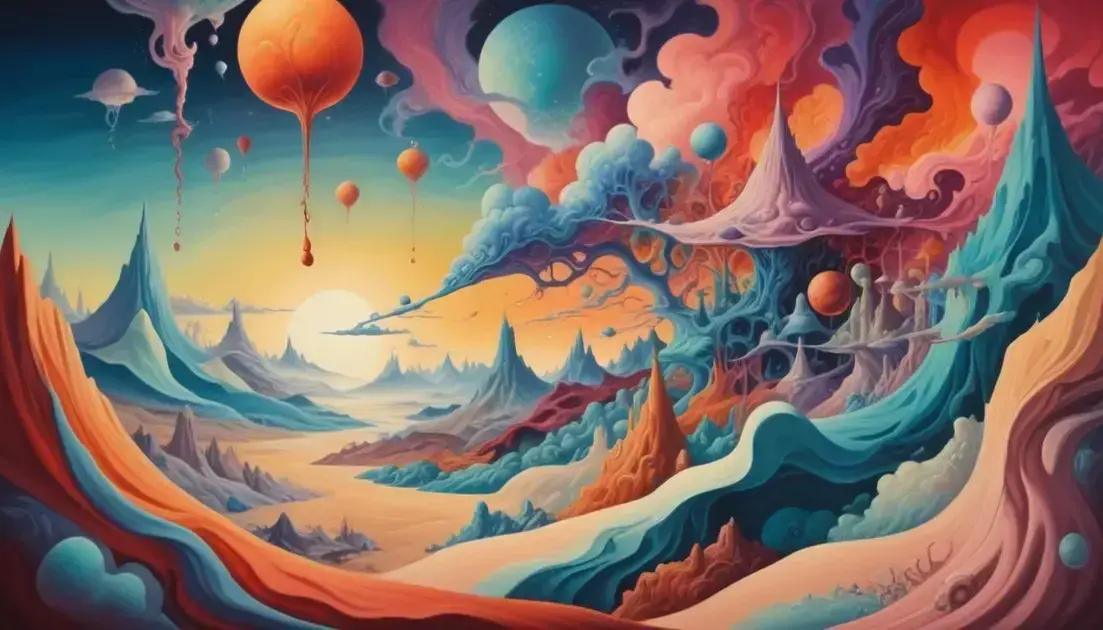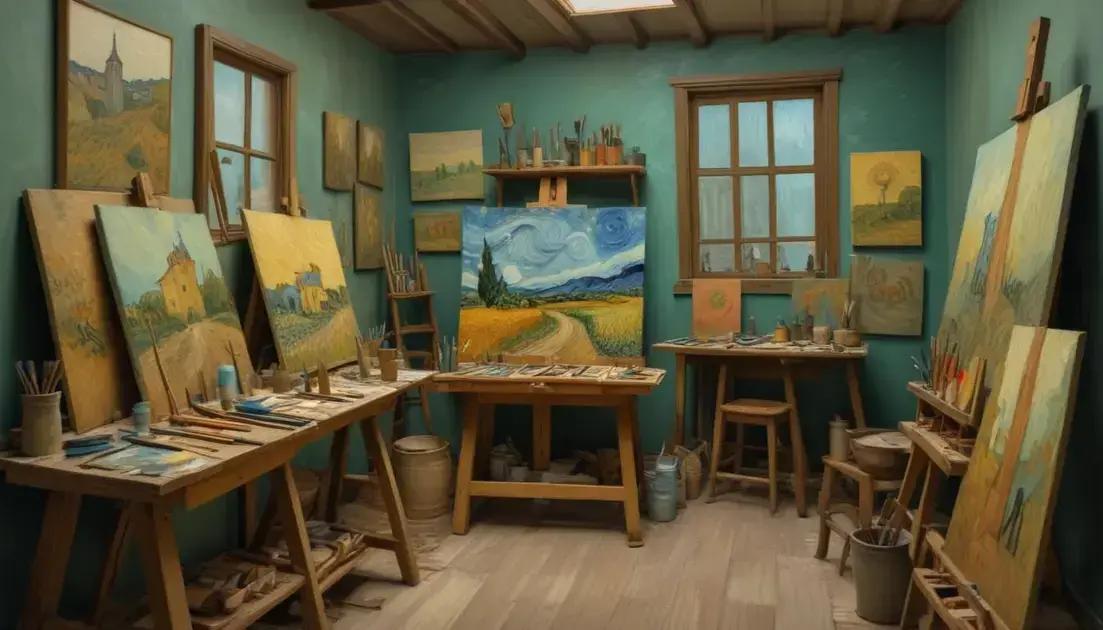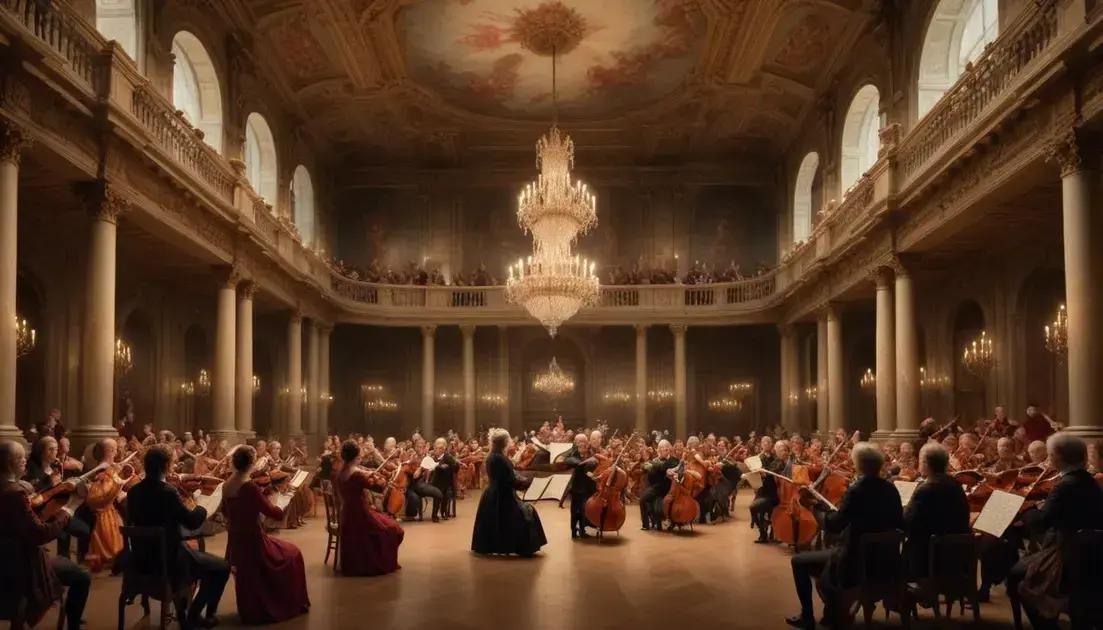
Surrealism: Dreams and the Unconscious in Modern Art
Surrealism is a vital movement in art that explores the unconscious mind and dreams, primarily shaped by artists like Salvador Dalí and André Breton. This movement encourages creativity through unconventional images and ideas, inviting viewers to interpret art in personal ways. Surrealism’s influence extends beyond visual arts into literature and film, inspiring contemporary creators to blend reality and imagination in their work. Its legacy continues to impact various artistic fields, highlighting the lasting power of dreams and the subconscious in art.
Discover the captivating world of Surrealism, where dreams and the unconscious collide to inspire unrivaled creativity. How do these elements shape modern art? Let’s dive in!
Understanding Surrealism: An Overview
Surrealism is a movement in art and literature that began in the early 20th century. It aims to unlock the creative potential of the unconscious mind. Surrealists believe dreams can reveal deeper truths about ourselves.
Artists like Salvador Dalí and André Breton were leaders in this movement. They created works that challenged our perception of reality. By combining strange images and ideas, they forced viewers to think in new ways.
One key technique used in surrealism is automatic writing. This means writing without self-criticism or control. It helps artists tap into their subconscious thoughts and feelings. The goal is to move beyond logical thinking.
An example of surrealism is Dalí’s painting, “The Persistence of Memory.” In this famous piece, clocks melt and distort, creating a dreamlike atmosphere. This challenges our typical understanding of time.
Surrealism has influenced many fields, including film and psychology. It encourages us to explore our imagination and see the world differently. Many still find inspiration in its bold ideas and unique styles.
In summary, surrealism connects dreams and reality. It shows us the power of the unconscious mind. Many artists today continue to explore surrealist themes in their work.
Key Figures in Surrealism: Dalí and Breton
Salvador Dalí and André Breton are two key figures in the surrealism movement. They shaped how we view art and creativity today. Dalí was known for his wild imagination and bizarre images. His artwork often featured dreamlike scenes that captivated viewers.
Dalí’s painting, “The Persistence of Memory,” is famous for its melting clocks. This piece challenges our understanding of time. It invites us to consider the fluid nature of reality. His unique style combines realism and fantasy, making his art standout.
On the other hand, Breton was a writer and poet. He is considered the founder of surrealism. Breton believed in the power of dreams and the unconscious mind. He wrote many manifestos that outlined the vision of surrealism.
One of Breton’s most famous works is “Nadja.” This book blends reality with fantasy, exploring human emotions and relationships. He encouraged artists to break free from traditional methods and express their deepest thoughts.
Both Dalí and Breton pushed the boundaries of creativity. They inspired countless artists to explore their inner worlds. Their influence can be seen in various forms of art, including literature, film, and photography.
As we look at their work, we understand how their ideas still resonate today. Surrealism continues to be a powerful force in the art world.
The Impact of Dreams on Modern Art
Dreams play a vital role in modern art. Many artists find inspiration in their dreams. This allows them to express feelings and ideas that words can’t capture. By exploring the unconscious mind, artists can create powerful images.
Surrealism emphasizes the connection between dreams and art. Artists like Salvador Dalí and Max Ernst used dream imagery to challenge reality. They painted scenes that mixed fantasy with real life. This invites viewers to interpret their works in personal ways.
For example, Dalí’s works often show dreamlike landscapes and unusual objects. His famous melting clocks symbolize the fluid nature of time, a concept often experienced in dreams. This makes us question our perception of reality.
Art influenced by dreams doesn’t just stop at surrealism. Many contemporary artists create pieces that explore psychological themes. They tap into personal dreams to convey deep emotions. This gives their artwork a unique, relatable quality.
Modern art installations and performances often incorporate dream elements too. Artists create immersive experiences that transport viewers into dream worlds. This encourages us to reflect on our thoughts and emotions.
In conclusion, dreams are a powerful source of creativity in modern art. They allow artists to express complex ideas and evoke strong feelings in their audience.
Exploring the Unconscious Mind in Art
Exploring the unconscious mind in art reveals deep feelings and thoughts. Many artists tap into this hidden part of ourselves. They create works that show what we might not express aloud. This can be powerful and eye-opening.
One popular method is through automatic drawing or writing. This technique involves creating without thinking too much. Artists let their hands move freely, allowing subconscious thoughts to emerge. The result often surprises even the artist.
Surrealists like Salvador Dalí used this approach. They believed that dreams hold hidden meanings. By combining dreamlike images, they encouraged viewers to look deeper. Their art invites us to see beyond the surface.
Many modern artists explore the unconscious by using a mix of colors and shapes. Their pieces can evoke feelings like joy, fear, or sadness. Each viewer may interpret the artwork differently, based on their own experiences.
Art therapy also uses this idea. It allows people to express their emotions when they can’t find the right words. By creating art, they can uncover hidden feelings and understand themselves better.
Overall, the exploration of the unconscious mind is essential in art. It helps us connect with our inner selves and with others. Through this journey, art becomes a mirror reflecting our thoughts and emotions.
Conclusion: The Legacy of Surrealism
The legacy of surrealism continues to influence artists today. This movement challenged norms and sparked new ideas in art. Surrealists encouraged people to question reality and explore dreams. They opened the door for creative freedom.
Today, many artists use surreal elements to express complex emotions. By blending fantasy and reality, they create pieces that provoke thought. This approach resonates with those seeking deeper meanings in art.
Surrealism has also impacted other areas like film and literature. Directors draw on surreal themes to tell stories in unique ways. Writers explore the unconscious mind through imaginative narratives.
Art shows us different perspectives. Surrealism remains a powerful tool for self-expression and understanding. The themes of dreams and the unconscious are still relevant in modern culture.
As we look at artworks inspired by surrealism, we see its lasting impact. It inspires new generations to think outside the box and embrace their creativity. Surrealism’s influence can be seen across cultures and artistic styles.
Conclusion
In conclusion, the legacy of surrealism greatly influences art and culture today. By challenging our perceptions, surrealist artists opened new paths for creativity. They invited everyone to explore dreams, imagination, and the unconscious mind.
Modern artists continue to draw inspiration from these ideas. They blend reality with fantasy to express complex emotions and thoughts. This keeps surrealism alive and relevant in today’s world.
Moreover, surrealism has impacted various forms of art, including film and literature. Its themes resonate with people seeking deeper connections in their experiences. As we appreciate surrealist art, we recognize its lasting power to inspire and provoke thought.
Ultimately, surrealism teaches us to embrace our creativity. This movement encourages us to think outside the box and explore our own dreams. The journey through surrealism is one of self-discovery and expression that remains vital in our lives.


